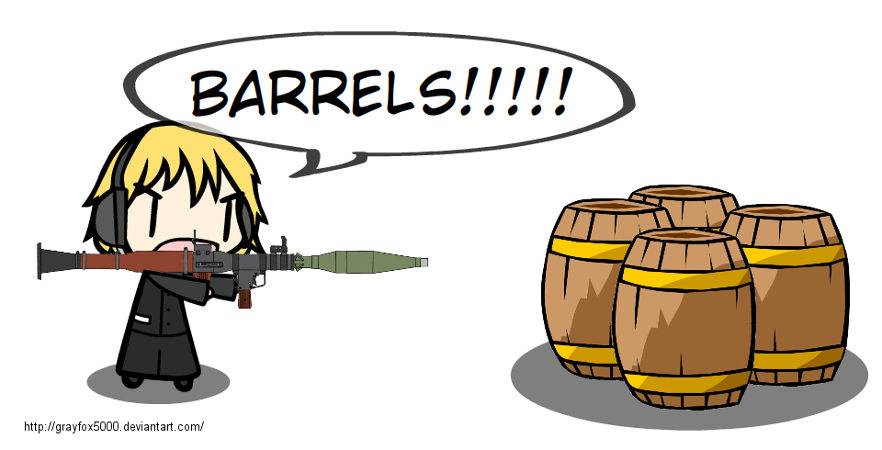[dropcap]W[/dropcap]hat is it about Barrels? I wrote recently about the Mary Celeste and a theory that is was the wrong type of a few of the barrels loaded aboard which may have been a leading cause of the mystery. Barrels are everywhere in every culture around the world. I play video games and they seem omnipresent there as well. From barrels to move and stack so as to gain access to a high spot, to barrels that can be moved to block a mechanism for some reason. They contain goodies once smashed or blow up if shot at or again put into a key spot to explode and blow down a wall. The one thing that they don’t seem to be used for in gaming is for hiding things in, like bodies. Sadly that is one area in real life where for that purpose they seem over used.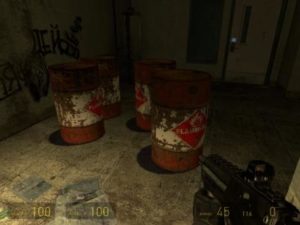
Barrels appear to be a go-to tool for hiding or disposing of bodies and here are a few of the more sensational stories.
One of the most bizarre and disturbing cases of mass murder is that committed by a respectable, well dressed, and charming middle-class man who, in the late 1940s, murdered at least 9 people.
John George Haigh was born on 24 July 1909 in Stamford, Lincolnshire. His family moved to West Yorkshire, where he spent the next 24 years of his life. Haigh’s parents belonged to a religious sect known as the Plymouth Brethren, who were purist and anticlerical. Bible stories were the only form of entertainment. Even participating in sports of any kind was forbidden, it must have been a barrel of laughs in the Haigh household.
What influence that fanatically, religious household on him is speculative as his life began falling apart quite rapidly once he was 25. In 1934 he stopped attending his parents’ church and married a 21-year-old woman he barely knew, Beatrice Hamer. The marriage didn’t last long, ending when Haigh was arrested in October 1934 and imprisoned for fraud.
On release in 1936 he moved to London and became at various times a chauffeur and an amusement machine mechanic, repairing the arcade machines of his employer. He also pretended to be a solicitor and thanks to his efforts in that guise he was again arrested and sentenced to 4 more years in prison for fraud.
Released again just before the second world war he quickly developed into a petty criminal and was again sentenced to a number of prison terms, avoiding being conscripted as a result.
It was in prison that he developed his idea of committing the perfect murder and used dead mice and jars of acid to find that a body could be completely destroyed if immersed, leaving only a sludgy residue.
He embarked on his new career charming, conning, killing and disposing of at least 9 victims and set up a production line of barrels to dispose of them by immersing them in sulphuric acid, poring the sludge that remained down the drain.
Haigh believed that he was committing the perfect crimes. Killing and disposing of his victims in his barrels of acid, he would then strip whatever assets he could get his hands on, including properties by forging deeds, and turn them into cash. From his crimes in today’s money he would have made well over £700,000.
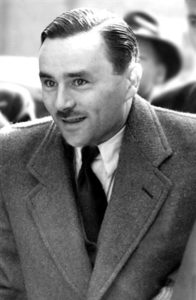 When the police began investigating he believed that they would be unable to prove his guilt without the bodies he thought were gone. But when they started to sift through the sludge at the bottom of the drain he had used technicians amassed a large amount of evidence including a gallbladder, bits of bone, part of a foot and gallstones amongst pounds of human fat that they recovered.
When the police began investigating he believed that they would be unable to prove his guilt without the bodies he thought were gone. But when they started to sift through the sludge at the bottom of the drain he had used technicians amassed a large amount of evidence including a gallbladder, bits of bone, part of a foot and gallstones amongst pounds of human fat that they recovered.
Haigh tried to claim insanity but he only ever had one motive, greed. Thankfully the prosecution proved that beyond doubt and he was found guilty and hanged at Wandsworth prison on 10 August 1949. For more information there is an excellent website all about the crimes of Acid Bath Haigh.
Haigh believed that he could dispose of all traces of the bodies by immersion in acid. Had he chosen a better method for the disposal of what was left the Police job would have been a lot harder than it turned out to be. But at least he tried.
Between 1992 and 1999 11 people were murdered in South Australia by John Bunting, Robert Wagner and James Vlassakis and 8 of those victims were found in acid-filled barrels in a disused bank vault in the small mid-north town of Snowtown. Police believed that the bodies had been moved into the disused vault after the three became aware of a police investigation after other bodies had been located elsewhere.
At their trial, which was the longest in South Australian history many reasons were put forward for the motives behind these crimes. Initially the victims were men who the trio suspected of being paedophiles or gay. Some were intellectually disabled and had, for whatever reason, earned the attention of the ringleader, Bunting who led the others with a Svengali like hold driving the agenda with a psychotic belief in a network of paedophiles and gays which he traced out on a wall in a spare room using notes, pins and wool to build up this none existent network.
From that start, choosing the first 3 or 4 victims, Bunting’s attention morphed towards anyone who he believed were strange or weak of may be a danger to him being found out.
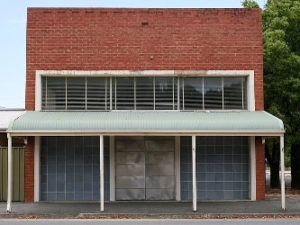 It did become clear during the trial that some of the victims have been tortured before being killed or dying. When the police entered the old vault they found instruments that had been used the victims including knives, a bloodstained saw, pliers, a shotgun, rope, tape, rubber gloves, and a Variac metallurgy device that was used to administer electronic shocks to the victims’ genitals. Several of the bodies were found to have been dismembered and there was evidence that the flesh of the 11th victim had been cooked. Greed wasn’t the motive behind these killings although some efforts were made to access the bank accounts of the victims and in a few cases the trio continued to draw the social security payments of the dead.
It did become clear during the trial that some of the victims have been tortured before being killed or dying. When the police entered the old vault they found instruments that had been used the victims including knives, a bloodstained saw, pliers, a shotgun, rope, tape, rubber gloves, and a Variac metallurgy device that was used to administer electronic shocks to the victims’ genitals. Several of the bodies were found to have been dismembered and there was evidence that the flesh of the 11th victim had been cooked. Greed wasn’t the motive behind these killings although some efforts were made to access the bank accounts of the victims and in a few cases the trio continued to draw the social security payments of the dead.
What was the motive? Bunting’s motivations have already been the mainstay of a number of PhD theses and will no doubt continue to be into the future but the disturbing conclusion from the trial is that he enjoyed it.
When I was writing Dreams of a Broken Man I did a lot of research into serial killers but whilst researching something completely different a couple of weeks ago I went off onto a tangent, as you do, and found myself down quite a few rabbit holes. One of them led me to this next story, so bizarre that I kept thinking about it.
In 1914 at the beginning of the First World War nations began to mobilise and men were conscripted and Hungary was no different. A tinsmith in the town of Cinkota, now a suburb of Budapest, was called up to fight. He lived in a small rented house and left it in the care of his housekeeper.
The man, Béla Kiss was reportedly tall, blond, and handsome. He had a prosperous business, and was known as a someone who loved to throw parties at the local tavern. He was seen by many ladies as the town’s most eligible bachelor. He had also taken to collecting a large number of metal barrels on the property and told anyone who asked that he believed that a war was coming and he was stockpiling fuel for the rationing that would follow.
The housekeeper looked after his house until 1916. Kiss had disappeared into the horrors of the war and was presumed dead when she received a visit from the town constable accompanied by a number of soldiers. The soldiers had been looking for fuel and the constable, remembering the stories of Kiss stockpiling some in barrels dutifully led them to the house. When they tried to open the drums they noticed a suspicious odour and the constable contacted his superior, Detective Chief Charles Nagy, who attended and took over the investigation. Mrs Jakubec, the housekeeper, protested but the police continued and opened one of the barrels to find the body of a strangled woman. Aghast they continued and opened all of the barrels to find that they all contained similar gruesome content. The police opened all of the drums and carried out a search of Kiss’s house which resulted in the discovery of 24 bodies. 23 women and 1 man who was believed to have been his wife’s lover. He had killed the lover and his much younger wife when he had found them together. It was that event that police speculated was the catalyst for his subsequent rampage.
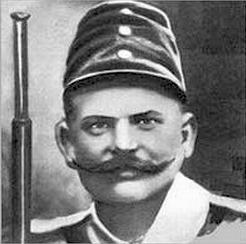 Now trying to distance herself from Kiss and any connection with the bodies Mrs Jakubec showed the police a secret room in the house that she had been told never to enter. It was filled with bookcases and a desk. Searching the room police discovered Kiss had been corresponding with at least 74 women. He wrote to them with the intention of defrauding them, and like the modern scam of the Nigerian Prince he would woo them and convince them to send him money, probably with the promise of marriage. If any of the women tried to follow up on the promises or became troublesome he would kill them and store their bodies in the barrels. Police found Court records showing two of the woman had started prosecutions against Kiss but had disappeared and the cases had been discontinued.
Now trying to distance herself from Kiss and any connection with the bodies Mrs Jakubec showed the police a secret room in the house that she had been told never to enter. It was filled with bookcases and a desk. Searching the room police discovered Kiss had been corresponding with at least 74 women. He wrote to them with the intention of defrauding them, and like the modern scam of the Nigerian Prince he would woo them and convince them to send him money, probably with the promise of marriage. If any of the women tried to follow up on the promises or became troublesome he would kill them and store their bodies in the barrels. Police found Court records showing two of the woman had started prosecutions against Kiss but had disappeared and the cases had been discontinued.
Although believed dead, an urgent message was sent out to the army that Kiss was to be arrested at once if he were to be located, but nothing was heard until in late 1916 Nagy received information that Kiss had been found and was recuperating from a wound in a Serbian hospital. By the time he had got there Kiss had disappeared, placing the body of another soldier in his bed.
There have been three more suspected sightings of Kiss. In 1919, he was seen in Budapest, the police investigated and found that Kiss had switched his papers with a battlefield fatality, assumed the dead man’s identity to make good his escape.
In 1924 a deserter from the French Foreign Legion told police of another Legionnaire going by the name of Hoffman who matched the description of Kiss. Again, when the police went to arrest him he deserted as well and disappeared..
In 1932 a homicide detective was sure that he had seen Kiss coming out of the subway station in Times Square but he lost him in the crowd and that sighting and other rumours that Kiss was in New York could never be verified.
And that is it. Béla Kiss, murders 24 people and then disappears. Probably to live out his life under an assumed identity somewhere in the world.
I blame the barrels.
